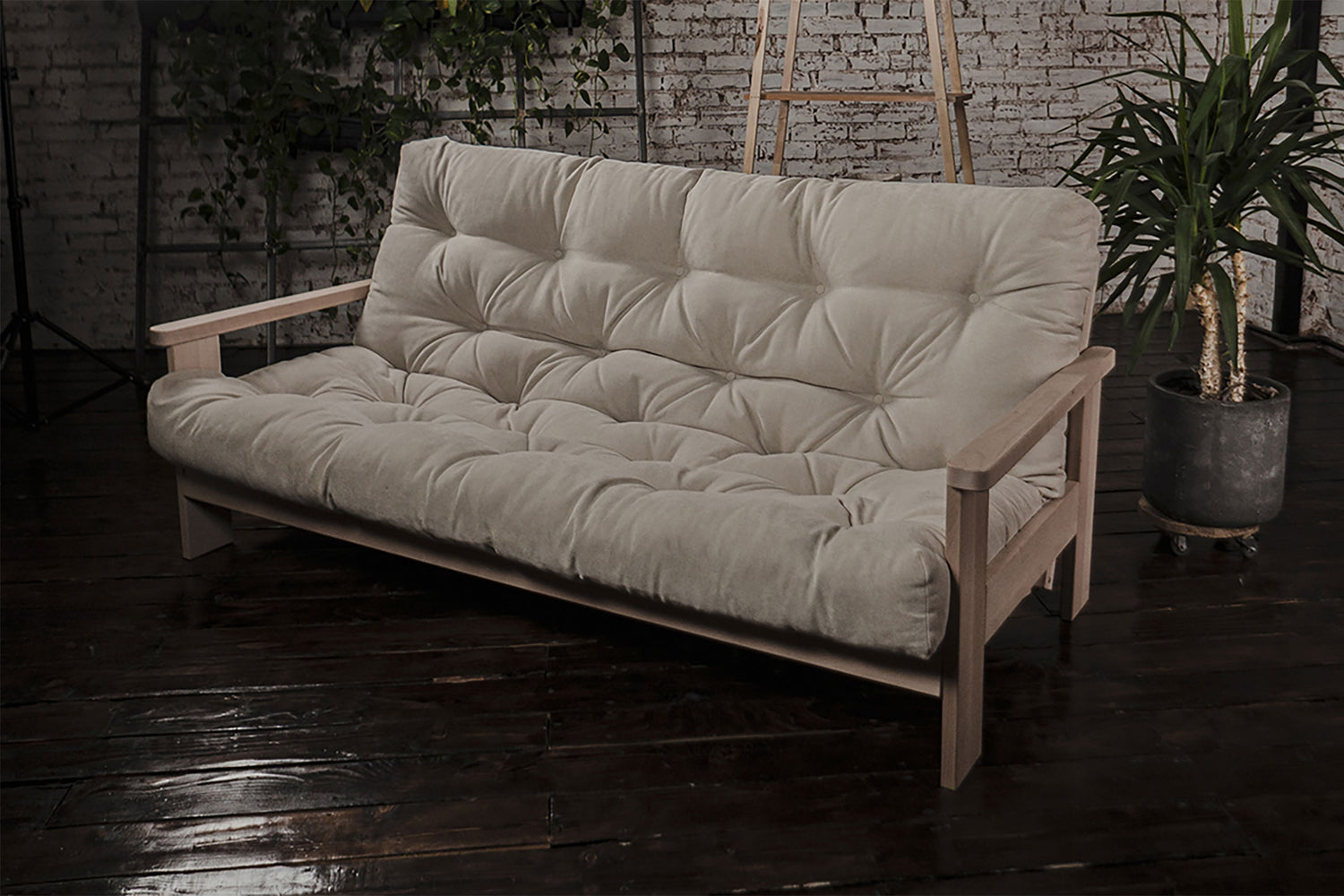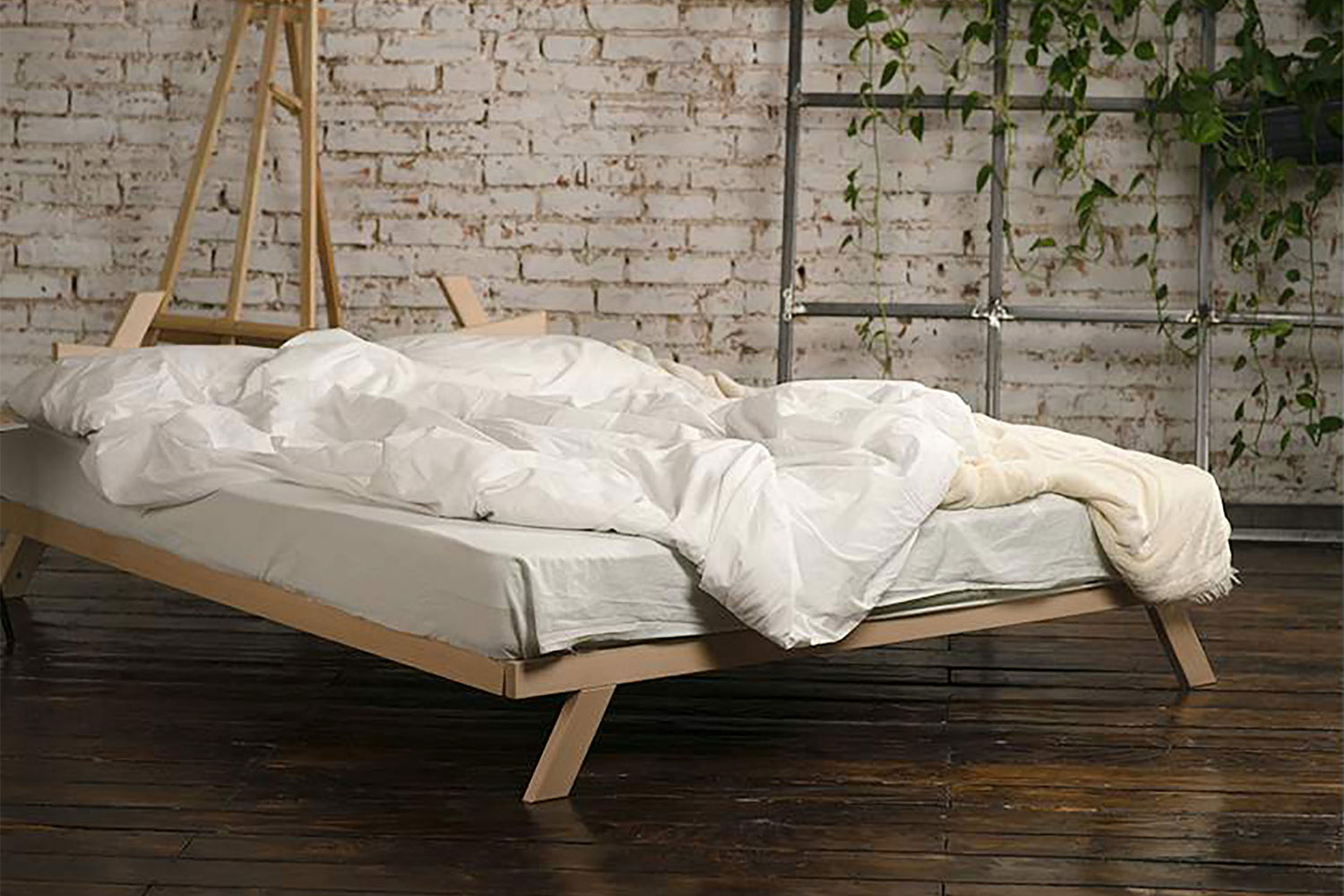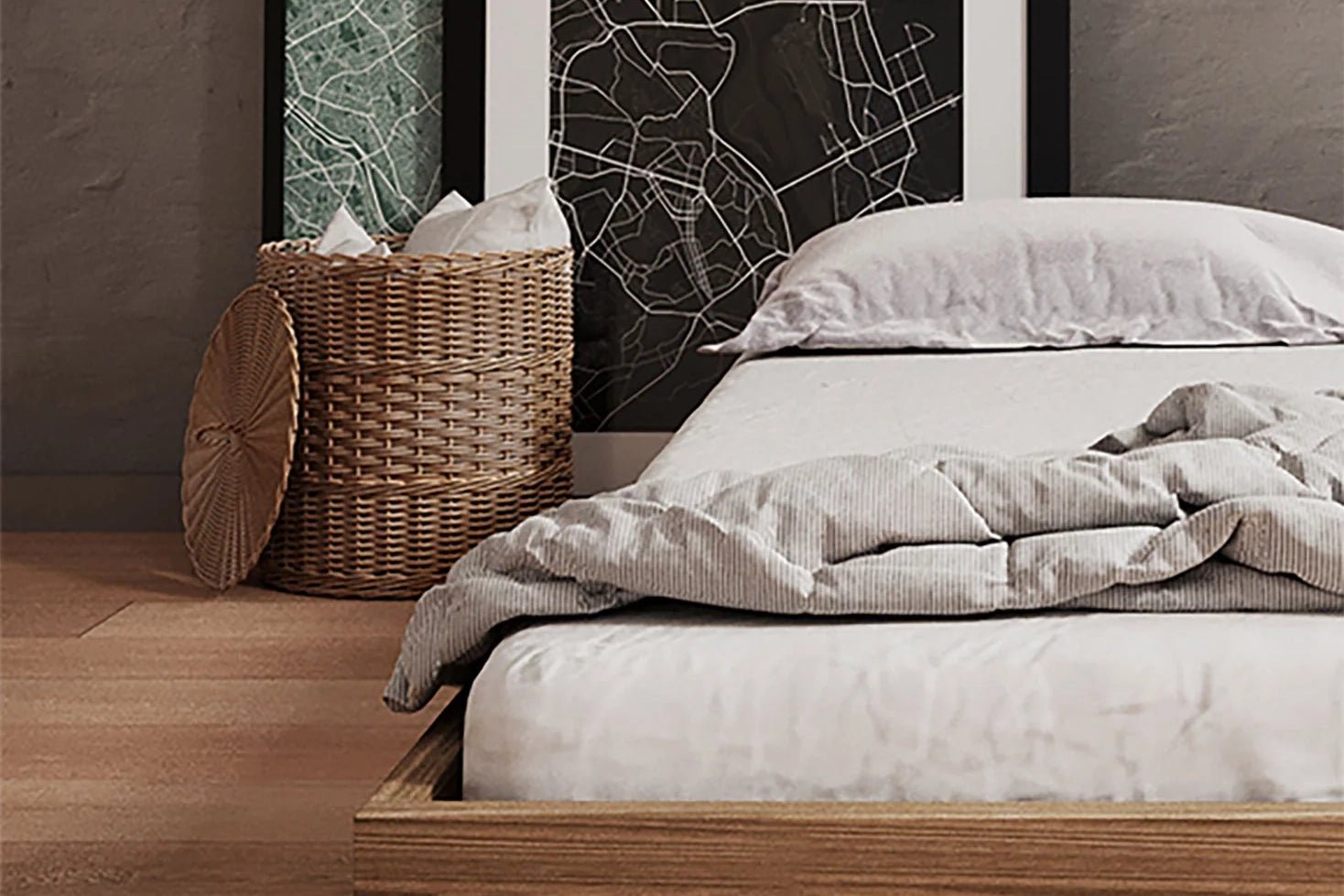
Tatami Rooms and Japanese Minimalist Bedrooms: How to Create Your Own
Share
In recent years, the minimalist bedroom aesthetic inspired by traditional Japanese decor has gained popularity, particularly for those seeking a calm, functional space. Japanese minimalist rooms are built around natural materials, simple furnishings, and intentional design that encourages relaxation and mindfulness. This guide will walk you through the essentials of designing a Japanese-inspired bedroom with tatami mats, shikibutons, and minimalist furniture that create a balance between comfort and simplicity.
Introduction to Japanese Minimalism and the Tatami Room Concept
What is Japanese Minimalism?
Japanese minimalism is deeply influenced by Zen philosophy, emphasizing simplicity, intentionality, and a connection to nature. Japanese interiors often incorporate neutral colors, organic materials, and minimalist decor, creating a balanced, peaceful ambiance. Essential to this design are functional, multipurpose pieces, as well as open floor space that fosters a sense of calm.
The Tatami Room and Traditional Japanese Elements
Tatami rooms are an essential part of Japanese homes and provide the foundation for authentic minimalist spaces. Traditionally, tatami mats form the flooring and help create a natural, grounding atmosphere. A key feature of Japanese minimalist rooms is the variety of unique, low-profile furniture and design elements that are both functional and meditative.
Seiza and Japanese Seating Culture
In a traditional Japanese tatami room, people often sit on the floor, either cross-legged or in a position known as seiza, where the legs are tucked under the body. This style of seating is both grounding and intimate, aligning with the minimalist aesthetic of Japanese design. Floor seating, often around a low Japanese table or chabudai, fosters a close connection to the environment and encourages simple, mindful living.
Zen Gardens and Bringing Nature Indoors
Zen gardens, or karesansui, are an iconic part of Japanese design. Although traditionally kept outside, indoor zen gardens can serve as a stunning decor piece in a minimalist bedroom. These small, raked sand and stone gardens symbolize harmony and can be meditative focal points within the room, bringing the calm of nature indoors. Zen gardens can also be displayed on low tables or shelves, enhancing the serene, organic feel of the space.
The Japanese Table and the Kotatsu
A low Japanese table, known as a chabudai, is a versatile and common feature of minimalist Japanese rooms. Positioned on a tatami floor and surrounded by floor cushions, it serves as a dining area, workspace, or place for tea. For colder months, a kotatsu is a popular Japanese table with a heating element underneath and a blanket draped over the edges. It provides warmth and coziness, making it a wonderful addition for winter comfort in minimalist rooms, and offers a unique cultural touch to the space.
Floor Pillows and Cushions
Floor pillows, known as zabuton, are commonly placed around low tables or used as casual seating in tatami rooms. They add comfort to seiza-style seating and introduce a layer of softness to the room. Often covered in natural fabrics like cotton or linen, zabutons complement the minimalist aesthetic and offer flexibility, as they can be easily moved or stacked.
Futon Beds and Japanese Sleeping Practices
Unlike Western beds, futon beds are foldable, thin mattresses traditionally placed directly on tatami mats. After use, futons are often folded and stored to free up space, embodying the minimalism central to Japanese design. A futon mattress or shikibuton can be used alone or on a low-profile platform, allowing you to create a comfortable, flexible sleeping area that easily integrates with a minimalist lifestyle.
Why Create a Tatami Room?
A tatami room is more than just a bedroom—it’s a retreat that encourages simplicity and mindfulness. By combining tatami mats, seiza seating, zen-inspired decor, and a traditional futon bed, you can craft a space that connects to nature and promotes a serene, relaxed atmosphere. Whether you’re looking to create a calm sleeping area or a versatile meditation space, a Japanese-style tatami room brings a touch of authenticity and tranquility to any home.

Tatami Mats: The Foundation of a Japanese Bedroom
What Are Tatami Mats?
Tatami mats are a staple of traditional Japanese interiors, offering a durable, sustainable surface for floors. These mats create a natural, comfortable surface that complements low-profile furniture and minimalist decor. They’re particularly suited for rooms designed around relaxation, meditation, or sleep. In addition to bedrooms, tatami mats are ideal for setting up a Japanese tea set, creating a meditation space, or enhancing the authenticity of a Japanese-style living room.
Benefits of Using Tatami Mats
Tatami mats are not only aesthetically pleasing but also practical. They offer cooling and insulating properties, which help regulate room temperature naturally. For allergy-sensitive individuals, tatami mats made from natural materials can also be a good option. Their design encourages the Japanese tradition of sitting and sleeping close to the floor, which fosters a grounded, peaceful experience. Tatami mats are easy to maintain with regular airing and brushing, and they add an earthy charm that complements the simplicity of minimalist decor.
Arranging Tatami Mats in Your Bedroom
Traditionally, tatami mats are arranged in specific patterns for harmony and balance. You can experiment with layouts to create an ideal sleeping or meditation area. Whether covering an entire floor or creating a small tatami section, these mats are flexible for various spaces. Consider combining tatami mats with a low-profile Japanese platform bed or placing a shikibuton directly on the mats to complete the look.
Shikibutons: The Traditional Japanese Futon Mattress
What is a Shikibuton?
A shikibuton, often known as a Japanese futon mattress, is a thin, foldable mattress placed directly on tatami mats or the floor. Unlike Western futons, which are often used on sofa beds, the shikibuton is designed specifically for sleeping. It’s typically filled with cotton, providing firm support that promotes spinal alignment and natural sleep posture.
Benefits of Sleeping on a Shikibuton
Shikibutons offer several health benefits, including improved posture and spinal alignment. They’re also made from natural materials like cotton and wool, which add to their appeal for those seeking organic bedding solutions. The firm support of a shikibuton can help reduce muscle tension, making it a popular choice for those accustomed to softer Western-style mattresses who want to try an alternative that aligns with minimalist principles.
Shikifuton vs. Shikibuton vs. Japanese Futon
While the terms shikifuton, shikibuton, and Japanese futon are often used interchangeably, they have subtle differences. A shikibuton is the Japanese floor mattress typically used for sleeping, while a shikifuton can sometimes refer to a slightly thicker or layered futon. The term Japanese futon generally encompasses both, focusing on traditional floor-sleeping practices. All options are lightweight, breathable, and easily rolled up for storage, making them ideal for minimalist bedrooms.
Caring for Your Shikibuton
To maintain your shikibuton, air it out weekly to keep it fresh and prevent moisture buildup. Regularly fluffing and rotating the mattress will help it retain its shape. In humid climates, you may want to invest in a futon drying rack or place it near a window on sunny days.

Convertible Futon Sofas: Flexibility for Small Spaces
Why Include a Futon Sofa?
A convertible futon sofa is an adaptable addition for smaller spaces or multi-purpose rooms. It serves as both a seating area and an extra sleeping space, embodying the functional approach central to Japanese design. A futon sofa can be particularly useful if you have limited room but want to maintain the flexibility of an extra bed.
Choosing a Futon Sofa for Your Space
When selecting a futon sofa for a Japanese minimalist bedroom, focus on quality, durability, and simplicity. Opt for neutral tones and natural materials, such as beechwood or oak, to match the room’s overall aesthetic. For added authenticity, pair the futon sofa with a traditional tatami mat or a low-profile platform frame.
Styling a Futon Sofa
To enhance a tatami room or minimalist bedroom, style the futon sofa with simple decor and low-profile tables. Layer it with a natural cotton futon mattress cover for added protection and a soft, breathable surface. For extra comfort, drape an organic cotton muslin blanket over the futon, adding a cozy, natural touch that complements the room's calming, organic aesthetic.
Japanese-Style Platform Beds and Tatami Bed Frames
What Makes Japanese Platform Beds Unique?
Japanese platform beds are low-profile, sturdy frames often crafted from natural wood. Their simple structure and clean lines align perfectly with minimalist bedroom designs. Some styles include tatami mat bases, providing a stable, cushioned surface for placing shikibutons or other Japanese futons.
Choosing a Tatami Bed Frame
A tatami bed frame offers both style and function, combining the grounding effect of tatami mats with the practicality of a raised frame. These frames elevate the sleeping area just off the floor, preserving the traditional Japanese aesthetic while adapting to Western comfort expectations. Choose a frame that fits the dimensions of your room and pairs well with other natural decor elements, such as wood or bamboo.

Bringing It All Together: Designing a Japanese Minimalist Bedroom
Selecting Decor to Enhance a Minimalist Aesthetic
Keep decor minimal, focusing on natural materials and textures. Wooden accents, cotton bedding, and a few well-chosen plants can add life to the room without compromising the minimalist feel. A Japanese tea set on a low table, for instance, can add a traditional touch.
Colors and Textures to Complement Japanese Minimalism
Incorporate muted colors such as beige, gray, and soft earth tones to harmonize with the tatami mats and shikibuton. Natural materials like wood, linen, and cotton enhance the room’s calming, grounded appeal.
Essential Tips for a Clutter-Free, Calm Space
For a truly minimalist space, focus on functionality and avoid excessive decor. Opt for storage solutions like built-in closets or under-bed drawers that help keep clutter out of sight. A clean, organized space aligns with the minimalist approach, creating an environment that promotes rest and relaxation.
Keep the space uncluttered with regular organization and mindfulness about what you bring into the room. By prioritizing function and simplicity, you can create a lasting minimalist environment.
Creating a Japanese minimalist bedroom requires thoughtful choices, from tatami mats to shikibutons and low-profile platform beds. Each element contributes to a harmonious, restful space that combines beauty with functionality, grounded in Japanese design traditions. Embracing this approach can lead to a calm, clutter-free environment where you can truly unwind.











